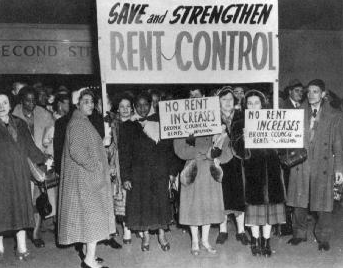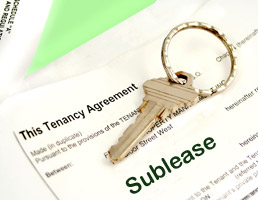 A recent article in the New York Times describes a tentative deal in Albany to extend the rent regulation laws in New York. Rent regulation in New York exists not only in New York City, but also in other large cities, such as Yonkers and White Plains. To speak generally, rent regulations usually restrict the amount of rent that a landlord can charge for an apartment. In addition, tenants are usually legally entitled to a one or two year lease renewal, subject to certain restrictions. Landlords are permitted to raise the rent a certain percentage per year, subject to an overall threshold of rent.
A recent article in the New York Times describes a tentative deal in Albany to extend the rent regulation laws in New York. Rent regulation in New York exists not only in New York City, but also in other large cities, such as Yonkers and White Plains. To speak generally, rent regulations usually restrict the amount of rent that a landlord can charge for an apartment. In addition, tenants are usually legally entitled to a one or two year lease renewal, subject to certain restrictions. Landlords are permitted to raise the rent a certain percentage per year, subject to an overall threshold of rent.
The proposed deal in Albany would raise the rent at which an apartment can be “de-regulated” from $2,500.00 per month to $2,700.00 per month. What this means is that apartments which rent for more than $2,700.00 per month would no longer be subject to rent regulation, and landlords would be permitted to charge “market rate” for such apartments. In addition, tenants of a de-regulated apartment would lose their right to a renewal lease at a fixed rate of rent increase. For example, if one rented an apartment for $3,000.00 per month for a two year lease, at the end of the two year term, the landlord would be permitted to raise the rent to whatever amount the market could bear. If the tenant does not want to pay the new rent, they would have to vacate the premises.
Because rent stabilized apartments renting for below $2,500.00 (soon to be $2,700.00) a month are likely to be regulated, the landlord under such a system has an incentive to remove such tenants after their current lease expires. If the tenants vacate, the landlord is permitted a “vacancy increase bonus,” which allows them to increase the rent that a new tenant would pay, to an amount greater than the legally permitted increase for the current tenant’s renewal. For this reason, some landlords will make a cash offers to “buy out” tenants of their rent regulated tenancies. Our firm has handled these situations, representing both landlords and tenants in different transactions regarding such buyouts, and we have discussed the specifics of such buyouts in a prior blog post.
 New York Real Estate Lawyers Blog
New York Real Estate Lawyers Blog


 A
A 
 Many people who pass away also leave behind the place in which they resided. The housing could be a rental apartment, a cooperative or condominium unit, or a house. The deceased may not necessarily have resided in the property immediately before death if they went to assisted living or a nursing home. This blog post will address the legal and practical matters arising from housing of the deceased.
Many people who pass away also leave behind the place in which they resided. The housing could be a rental apartment, a cooperative or condominium unit, or a house. The deceased may not necessarily have resided in the property immediately before death if they went to assisted living or a nursing home. This blog post will address the legal and practical matters arising from housing of the deceased. One of the most frequently asked questions when our firm meets with a new client relates to the awarding of attorney’s fees. Many of our landlord-tenant clients ask us whether they can recover their attorney’s fees in Court from the other party in the litigation. The answer to this question is not a simple one, and this blog post will answer under what circumstances a party may recover their attorney’s fees from the other party, whether in a landlord-tenant litigation, or other type of case.
One of the most frequently asked questions when our firm meets with a new client relates to the awarding of attorney’s fees. Many of our landlord-tenant clients ask us whether they can recover their attorney’s fees in Court from the other party in the litigation. The answer to this question is not a simple one, and this blog post will answer under what circumstances a party may recover their attorney’s fees from the other party, whether in a landlord-tenant litigation, or other type of case.  First, we would like to wish all followers of our blog a happy and healthy 2015. We look forward to continued successful legal outcomes for all of our clients in the New Year.
First, we would like to wish all followers of our blog a happy and healthy 2015. We look forward to continued successful legal outcomes for all of our clients in the New Year.  Quite often,
Quite often, 
 Recently in the news is the rather
Recently in the news is the rather  A recent
A recent